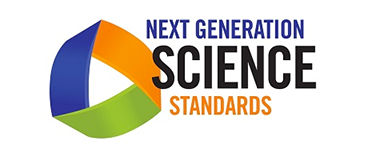The Teaching and Learning Collaborative, Reflections from an Administrator
By Kelly Patchen
My name is Mrs. Kelly Patchen, and I am proud to be an elementary assistant principal working in the Tracy Unified School District (TUSD) at Louis Bohn and McKinley Elementary Schools. Each of the schools I support are Title I K-5 schools with about 450 students, a diverse student population, a high percentage of English Language Learners, and students living in poverty. We’re also lucky to be part of the CA NGSS K-8 Early Implementation Initiative with the K-12 Alliance.
I see my role as an assistant principal being an educational leader charged with supporting and leading students, staff, and community into the future based on our school community’s shared values, beliefs, and principles; these guide decisions for what is best for all students to be successful. Effective educators help our students develop the skills necessary to thrive in the 21st century. We are charged with preparing all our students to succeed in a rapidly changing, high-speed, technology-infused, global economy. These changes are redefining the skill sets our children need to be prepared to contribute to society: to think critically and creatively, to communicate clearly and with evidence, to solve problems, and to work collaboratively, just as scientists do.
To be an effective instructional leader who is learning and supporting teachers on this journey requires I understand the key instructional and conceptual shifts required by the California Next Generation Science Standards (NGSS). The Teaching and Learning Collaboratives (TLC, or lesson study sessions) provided by TUSD’s Early Implementers have helped me be an active learner in building my own understanding of the NGSS and phenomenon-based, three-dimensional science instruction. Site administrators in TUSD are invited to join TLCs and this opportunity has deepened our understanding of the NGSS-aligned science teaching.
Research into TLC/lesson study indicates it increases teacher efficacy and teachers’ content knowledge while increasing teaching quality, all precursors to student achievement. In my observations of our district’s lesson study teams at work, I am always amazed at the level of rigor involved and learn something new each and every time.
For myself, I learned that the TLC/lesson study process makes the most sense for true professional learning to occur. I was able to watch a team of dedicated educators design a lesson, implement a lesson, assess student work, and then modify a lesson to help promote explicit learning about the NGSS’s crosscutting concepts based on the interdependence phenomenon. I increased my own foundational knowledge of NGSS through this process. I personally saw how valuable student-generated science notebooks are as a way for students to express ideas and make meaningful sense of and connections between science concepts. The lesson study teams consistently use the students’ notebooks to engage students in the practices of real scientists.

Each time I am a part of this process I learn more about the differences and similarities between NGSS and the Common Core, as well as the intent and architecture of the NGSS. By using NGSS to frame the act of doing science, I have learned that the standards include the three dimensions of science and engineering practices, disciplinary core ideas, and crosscutting concepts which lead to students gaining a multifaceted understanding of the broad and connected nature of scientific phenomena. I have learned that by teaching NGSS-aligned science, our students will be able to learn by doing, making explanations like scientists and designing solutions like engineers, all leading to a deeper, more robust understanding of disciplinary content. I am grateful to the teacher-leaders for this opportunity to learn, as it will allow me to better support teacher’s and students’ needs at my sites. To help create a school community that actively encourages and fosters the changes occurring in science education, it is critical to advocate for on-going professional development, opportunities for co-planning lesson designs, trying new performance tasks, and providing necessary resources for science investigations. This will help build teachers’ capacity as facilitators of students’ inquiry.
I believe that our district’s participation in lesson study has strongly supported the development of district capacity; the small cohort of teacher leaders has built their own understanding and now are guiding the implementation of NGSS across our district as advocates and educational leaders. I am honored and proud to be learning from our teacher-leaders as they help us redefine how to best engage students in an inquiry-based instruction that develops conceptual understanding of the science practices students need to think critically, frame productive questions, analyze information, and solve complex problems. Our students are tomorrow’s future leaders and I for one want them to be empowered to become actively engaged citizens who are successful lifelong learners!
For more information about how the TLC process deepens teacher understanding of the NGSS and transforms practice, check out the companion piece to this article: NGSS and the Teaching Learning Collaborative: It’s About the Process.
For more information on the nuts and bolts of the TLC, check out the companion piece to this article: K-12 Alliance Teaching Learning Collaborative: Nuts and Bolts of a Lesson Study.
Kelly Patchen is an Assistant Principal at Louis Bohn and McKinley Elementary Schools, Tracy Union School District.







